Can Multiple MC4 Extension Cables Be Connected Safely?
Too many solar users connect MC4 cables without knowing the hidden risks. It looks simple, but one wrong connection can cause overheating or voltage loss.
You can connect multiple MC4 extension cables together safely only if total length, resistance, and connection quality remain within system limits. Each extra joint increases risk of voltage drop and heat buildup.
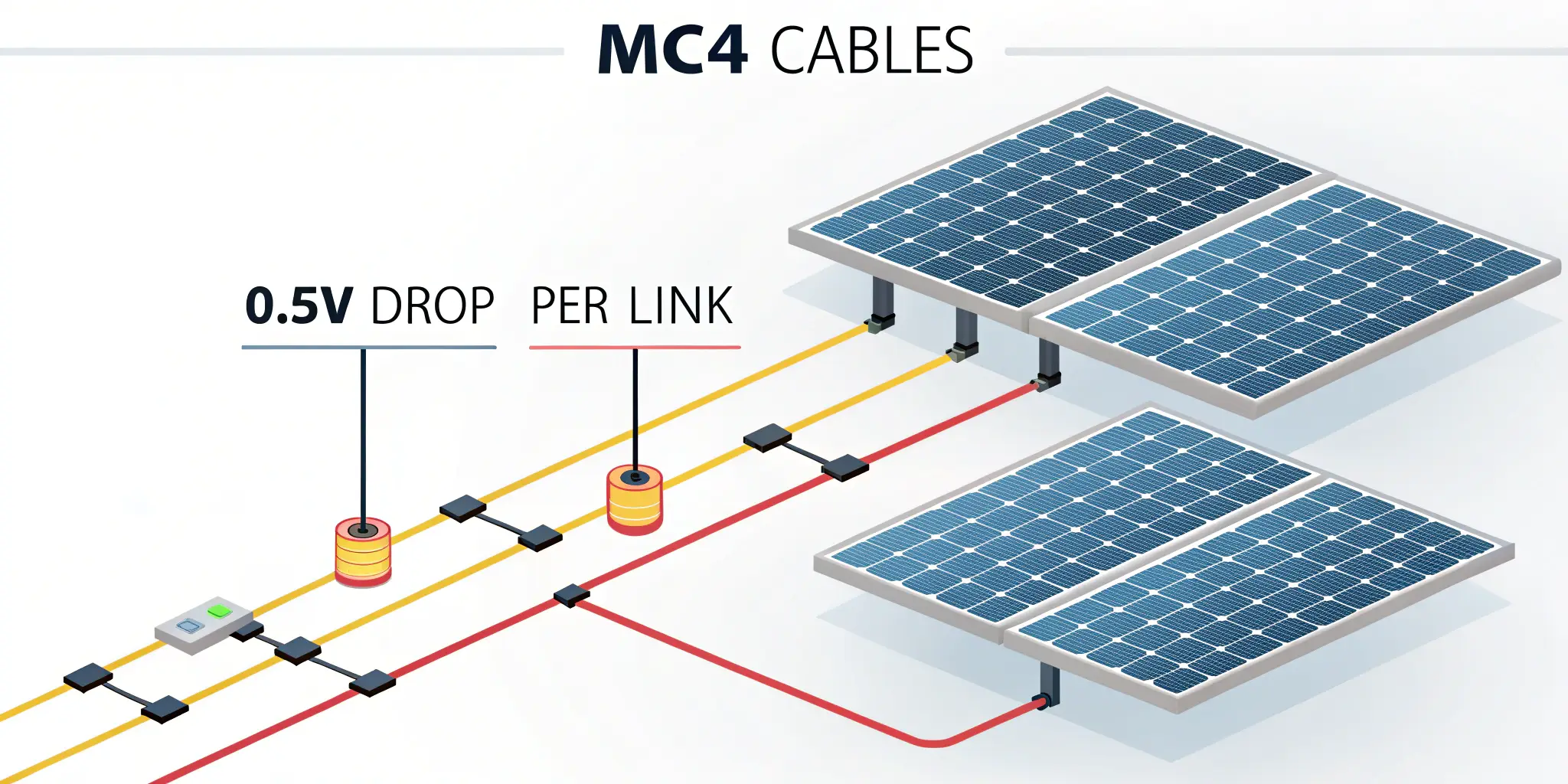
Many solar beginners think linking more MC4 cables is harmless. But each connection changes how current flows. Let’s explore what really happens when you extend solar wiring too far.
How many MC4 extension cables can you safely connect in series?
Adding more cables looks easy, but every connection point creates resistance. Even a tiny mismatch can lead to significant energy loss.
You should limit MC4 extension connections1 to a maximum of two or three in series. Beyond that, resistance and voltage drop2 increase too much for safe performance.
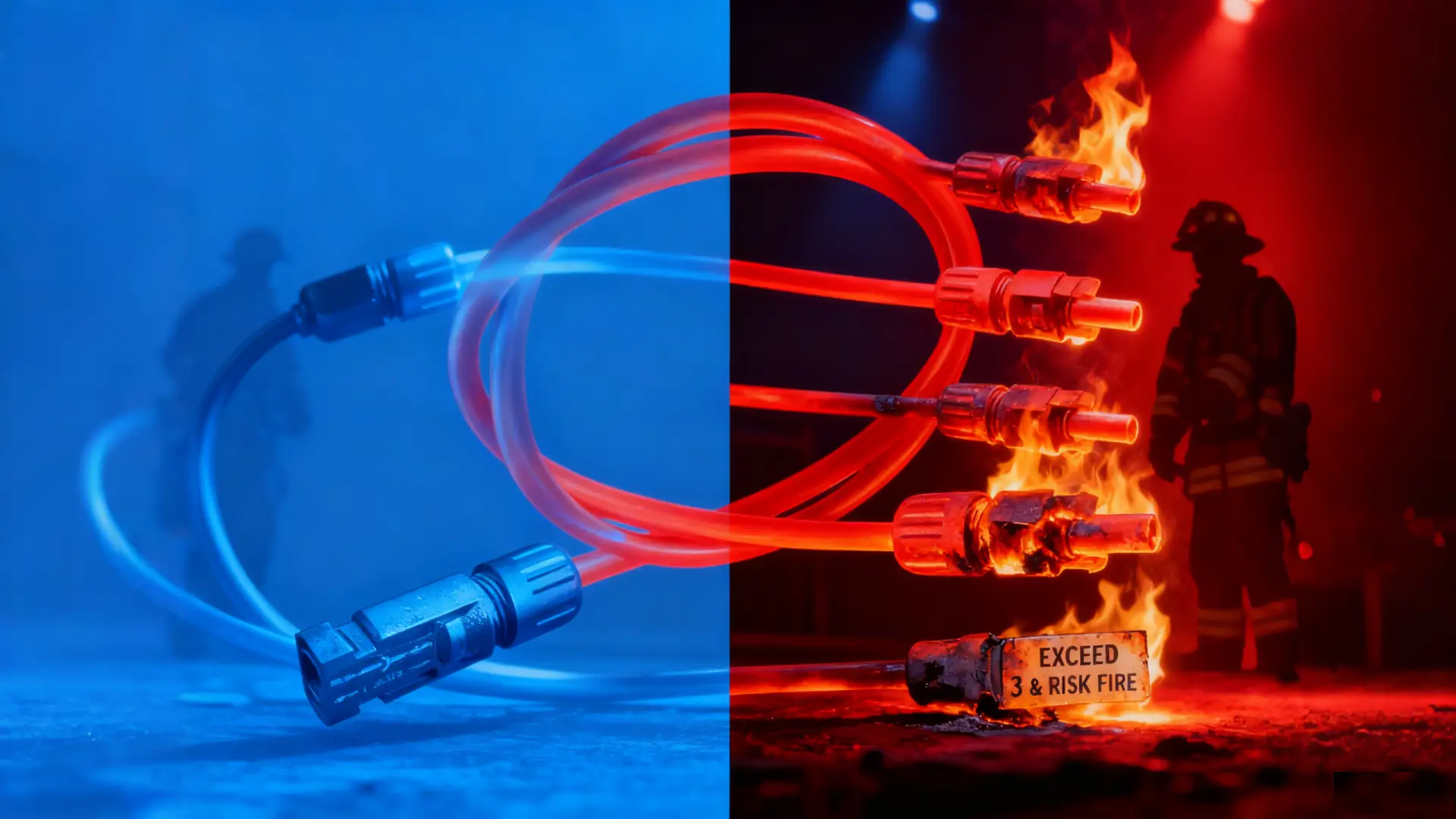
Going deeper: how resistance adds up
When two MC4 connectors are joined, each connection introduces around 0.1–0.3 ohms of resistance. If you link three or four pairs, that extra resistance starts generating heat, especially under high current loads.
| Number of MC4 pairs | Estimated extra resistance (Ω) | Power loss at 10A (W) |
|---|---|---|
| 1 | 0.2 | 20 |
| 2 | 0.4 | 40 |
| 3 | 0.6 | 60 |
In my experience, installers often think “more cable equals more flexibility,” but they forget that solar power is DC — which is highly sensitive to every small resistance. Keeping connections minimal keeps performance stable and safe.
Does connecting multiple MC4 cables increase voltage drop3 or resistance?
Yes — and it’s one of the biggest hidden losses in PV wiring.
Each added MC4 joint increases total resistance4, which lowers voltage and efficiency. This voltage drop means your solar panels deliver less energy to the inverter or battery.
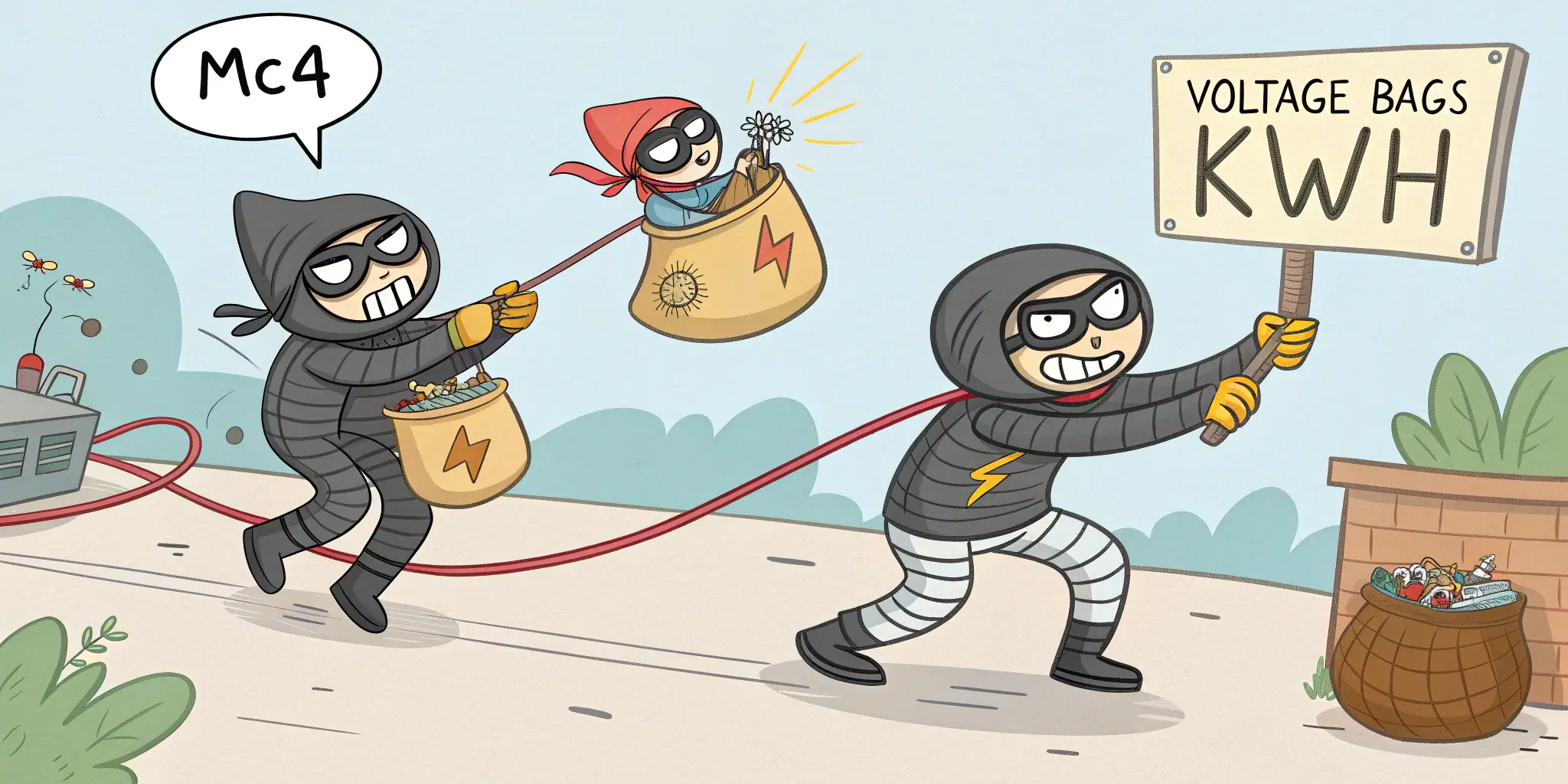
Understanding voltage drop in real terms
Voltage drop happens when current travels through a long wire and loses potential due to resistance. In DC systems, this effect is more noticeable. For instance, a 10-meter run at 10A using 12AWG wire can lose about 3% voltage. Double that length, and the drop could reach 6%.
| Cable Length (m) | Wire Gauge | Voltage Drop @ 10A | Efficiency Loss |
|---|---|---|---|
| 5 | 12 AWG | 1.5% | Low |
| 10 | 12 AWG | 3.0% | Medium |
| 20 | 12 AWG | 6.0% | High |
The takeaway: longer or chained cables cause current loss. To prevent this, use thicker wires, minimize joints, and always calculate voltage drop before installation.
What is the maximum cable length allowed for MC4 connections?
Most installers overlook manufacturer guidelines, assuming MC4 cables can run indefinitely. That’s a mistake.
The recommended maximum MC4 cable length5 for typical 12V–48V solar systems is 30 meters (about 100 feet) per side. Beyond this, voltage drop and heat buildup become critical.
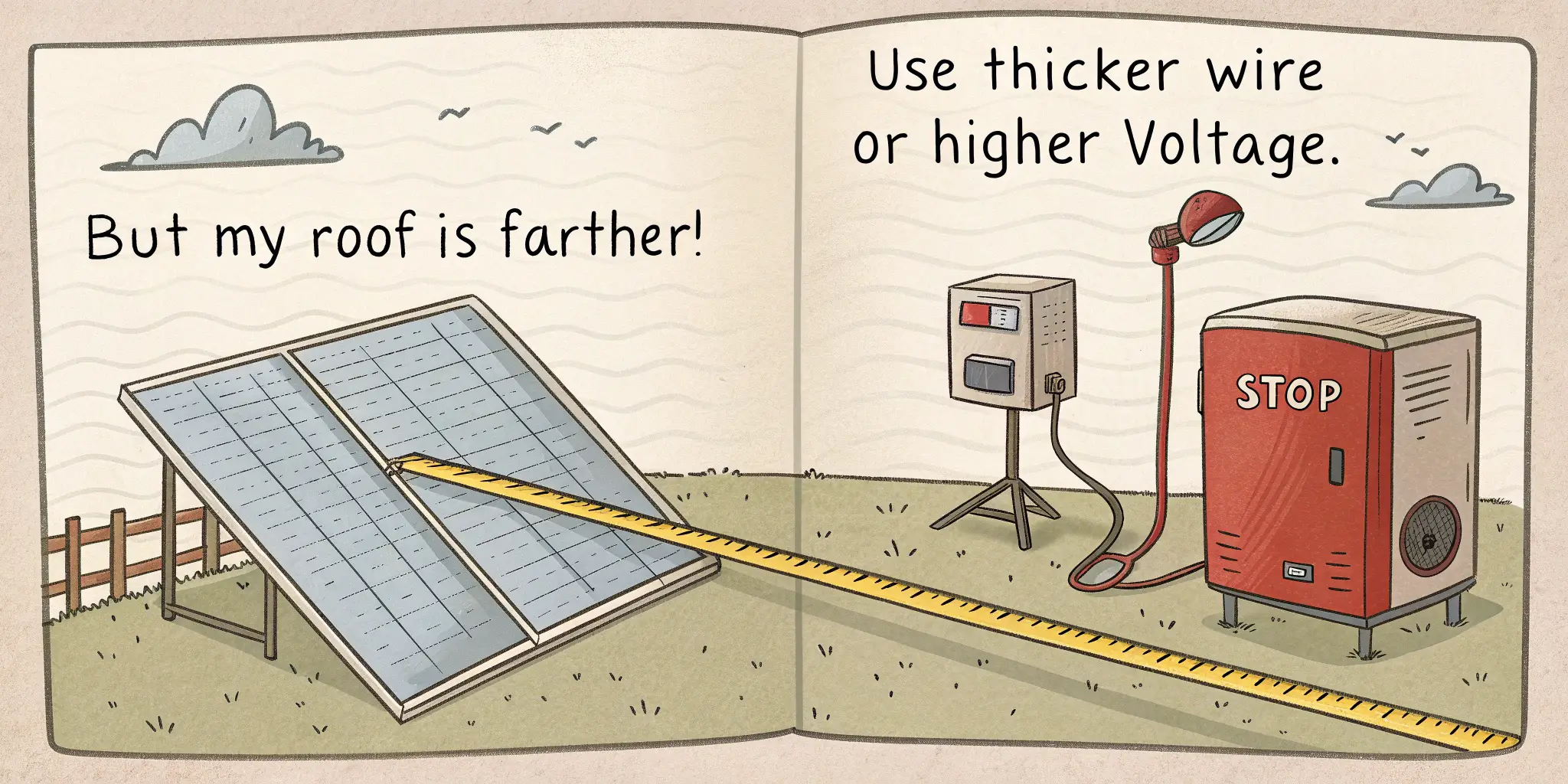
Why length limits matter
Every additional meter of cable increases total resistance. If your panels are far from the charge controller, the cable must be thicker to compensate. Exceeding 30–40 meters often causes a 5–10% voltage drop — which can lead to inverter errors or battery undercharging.
To solve this:
- Use 10 AWG or 8 AWG wire for long runs.
- Avoid chaining more than two extensions.
- Consider repositioning charge controllers closer to panels.
Do extra MC4 joint6s cause overheating or power loss in solar systems?
This is a serious issue most users discover too late — after connectors melt or burn.
Each extra MC4 joint increases contact resistance7. Under load, this creates heat spots that can lead to connector failure, fire risk, or long-term power loss.
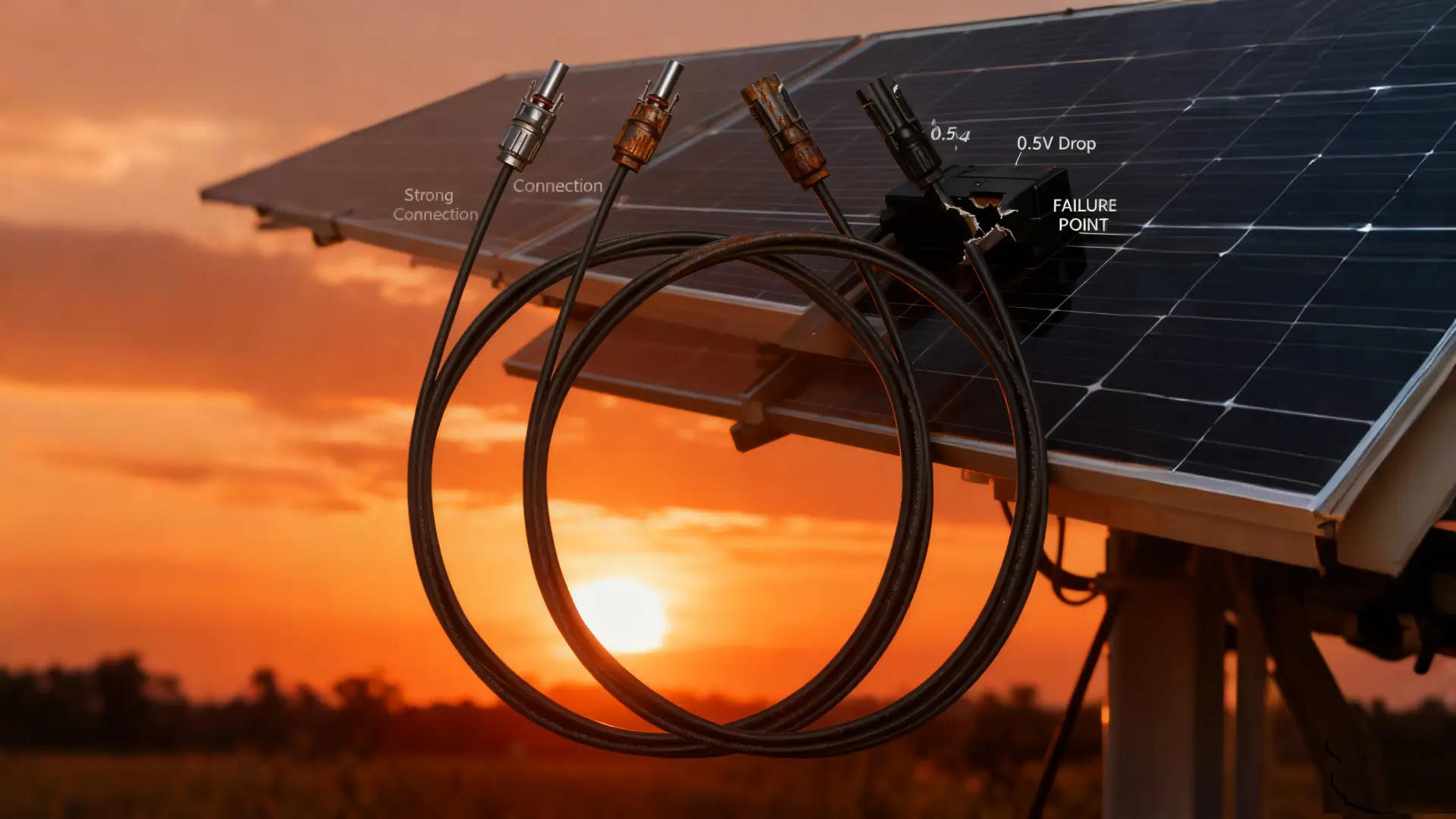
The science behind overheating
When electricity flows through imperfect joints, resistance generates heat (P = I²R). A 10A current through a poor-quality or oxidized joint can easily reach over 70°C. Dust, corrosion, or moisture makes it worse. Once connectors heat up, they lose spring tension and worsen over time — creating a dangerous feedback loop.
Prevention tips:
- Use genuine Stäubli MC4 connectors with proper contact materials.
- Ensure connectors click firmly with no gaps.
- Clean terminals before connection.
- Avoid mixing brands — their tolerances differ.
I once saw a system where third-party MC4s melted during summer. It took hours to replace and cost more than proper cables would have in the first place.
How can you waterproof and secure long MC4 cable runs outdoors?
Outdoor conditions — UV, rain, wind — can destroy poorly protected connections in months.
All MC4 extension cables are IP67-rated, but only if mated correctly and tightened with proper sealing rings. Secure runs with clips, conduits, and strain relief to maintain durability.
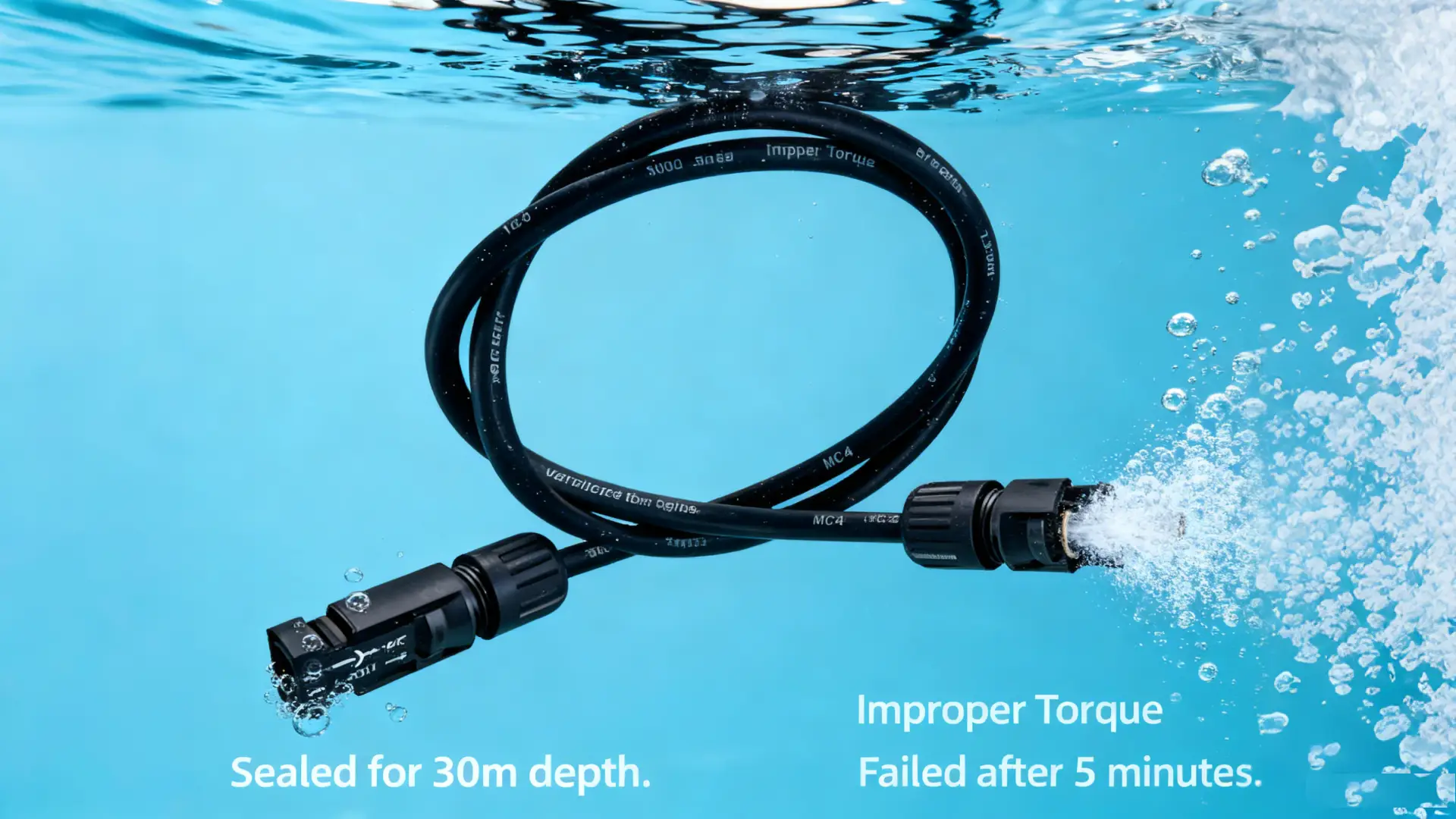
Best practices for outdoor cable protection
- Use UV-resistant cables: Ordinary insulation breaks under sunlight. Choose solar-rated PV wire8 (TÜV or UL certified).
- Seal every joint: Always tighten the gland nut and confirm the O-ring sits evenly.
- Elevate cables off the ground: Prevents moisture pooling and rodent damage.
- Use conduit or cable trays: Protects from wind stress and abrasion.
- Regular inspection: Every 6–12 months, check for cracks, looseness, or discoloration.
| Protection Method | Purpose | Recommended Frequency |
|---|---|---|
| Sealing & tightening | Prevent water ingress | Every connection |
| Conduit protection | Shield from UV and impact | Entire cable run |
| Visual inspection | Detect damage or aging | 6–12 months |
I always tell installers: a waterproof connection isn’t just about the connector—it’s about installation quality. Good cables last 25 years only if every joint is sealed right.
Conclusion
You can safely connect multiple MC4 extension cables if you control length, resistance, and joint quality. Fewer connections, thicker wires, and proper waterproofing always mean longer, safer, and more efficient solar performance.
-
Understanding the safe limits for MC4 connections is crucial for maintaining efficiency and safety in solar setups. ↩
-
Exploring the impact of resistance and voltage drop can help optimize solar power performance and prevent energy loss. ↩
-
Exploring the effects of voltage drop will provide insights into maintaining optimal energy delivery from your solar panels. ↩
-
Understanding how MC4 joints affect resistance can help optimize your solar panel setup for better efficiency. ↩
-
Understanding the maximum cable length is crucial for optimizing solar system performance and preventing voltage drop. ↩
-
Understanding the impact of MC4 joints can help prevent overheating and ensure efficient solar energy production. ↩
-
Exploring contact resistance will provide insights into maintaining optimal performance and safety in solar installations. ↩
-
Exploring solar-rated PV wire will help you choose the right materials for long-lasting outdoor cable protection. ↩

